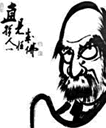Deep bows, Kokuu - you saved me deep trouble!
In this digital world, problems can be created so quickly. And Fugen has provided exact information which fascicle to read.
Unfortunately, I was unable to locate it (on my small screen, in the index the "Eight awakenings" look like "Fight awakenings"...).
It would have been a good practice reading the wrong chapter (95, Receiving the Precepts), of course.
And wondering what this has to do with parinirvana.
Thanks again.
Gassho,
Danny
#sattoday
In this digital world, problems can be created so quickly. And Fugen has provided exact information which fascicle to read.
Unfortunately, I was unable to locate it (on my small screen, in the index the "Eight awakenings" look like "Fight awakenings"...).
It would have been a good practice reading the wrong chapter (95, Receiving the Precepts), of course.
And wondering what this has to do with parinirvana.
Thanks again.
Gassho,
Danny
#sattoday







Comment